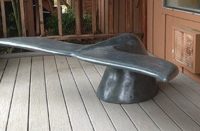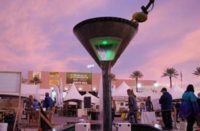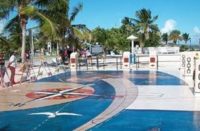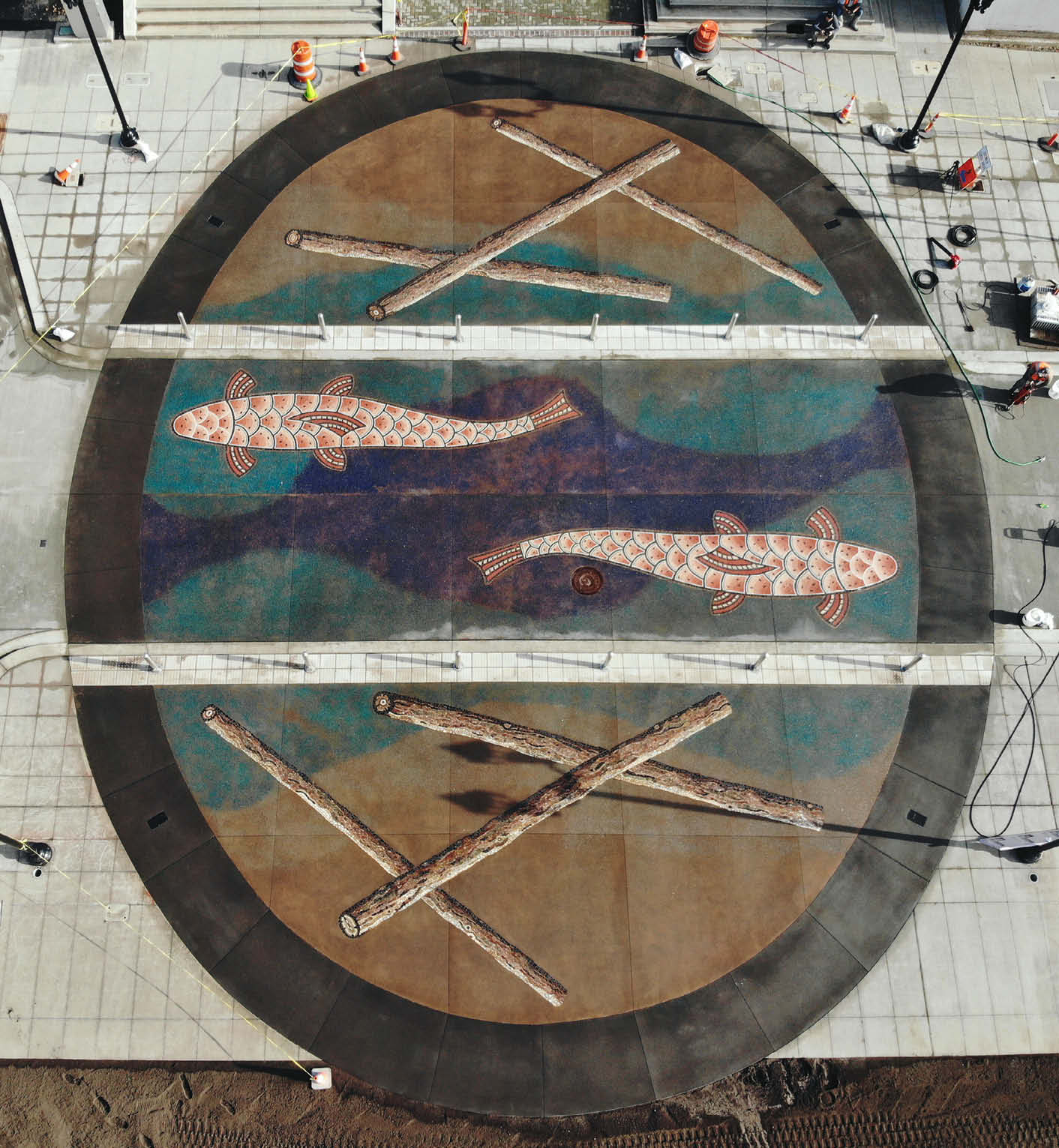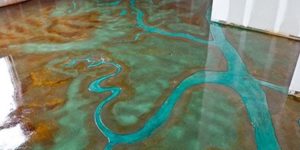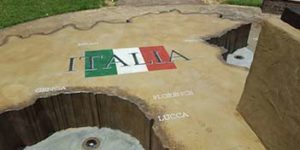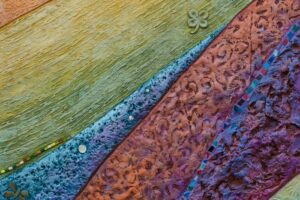
There’s nothing new about mosaics. Excavations of Pompeii show it was a popular form of decoration in upper-class Roman homes around the time of Christ.
But those were mostly on the small side and set in plaster. Something larger than a pickup, set in concrete and sturdy enough to be driven on is another matter entirely.
However, by finding the right concrete contractor and mosaic artist, that’s exactly what the Portland suburb of Milwaukie, Oregon, did to add a little extra magnetism to a community gathering place.
Drawing from nature
Jennifer Garbely, assistant city engineer and the official overseeing the project, explains that a master plan for the community’s downtown dates to 2008. Much of it lay dormant, though, until Garbely took over the project almost three years ago.
While some of the delay was due to funding, the project also benefited from the extension of a light rail line which allowed Milwaukie to close off a street which became a walkway.
“Once that came through, we needed to redo the sidewalks and bring them up to code,” Garbely says. “We also had other infrastructure that needed to happen. We needed a new storm line, a new water line. Once those were in place, we could actually build the plaza.”
Working with the Portland office of Environmental Science Associates (ESA), the city hosted an open house to get feedback on what people wanted to see in the plaza. Almost 80 percent said they wanted a nature theme.
“From there, we stared creating concepts of what the plaza might look like, including drawings,” Garbely says. They had to decide how they were going to create the plaza and what kind of materials they were going to use.
As an engineer, she adds, she wanted something that would be easy to maintain and last a long time while being a drivable surface.
“At the same time, I was wondering how we could create the things in the design,” she says.
To find out the answer, the city hired Granite Construction as its contractor before the design was finalized. The contractor, in turn, brought in concrete contractor Belarde Co. of Snohomish, Washington.
Stained concrete wouldn’t do
“We’d done a lot of work with Granite Construction, and they reached out to us knowing we would be capable of doing the project and giving the owner the highest standard of work possible,” says Jacob Belarde, who oversaw the project.
Garbely was certain simply staining the concrete wouldn’t provide the look she was seeking. Belarde agreed and proposed a mix of Lithocrete (a concrete surface-seeded with anything from crushed aggregates and glass to seashells and minerals) with LithoMosaics (a patented mosaic system) to create the Coho salmon and logs the area was known for.
“We were helping the landscape architect with the design,” explains Belarde. “They gave us their intent of what they were trying to achieve, and through a process of discussion and showing photos of work we’d done, it steered toward the LithoMosaics.”
“I saw the advantages right off the bat,” says Garbely. “They presented multiple projects they had worked on, and we spent time talking about how to maintain (a LithoMosaic), its lifespan and the artistic aspects we could achieve. I was really excited about the capabilities of the system.”
Once the city was sold on the idea of LithoMosaics, Belarde brought in Amanda Seibel, a Rancho Santa Margarita, California-based mosaic artist and owner of Amanda Elizabeth Mosaics. She had worked with Belarde on mosaic projects in the past.
“This is the largest project we’ve done with Amanda,” says Belarde. “She’s an amazing artist.”
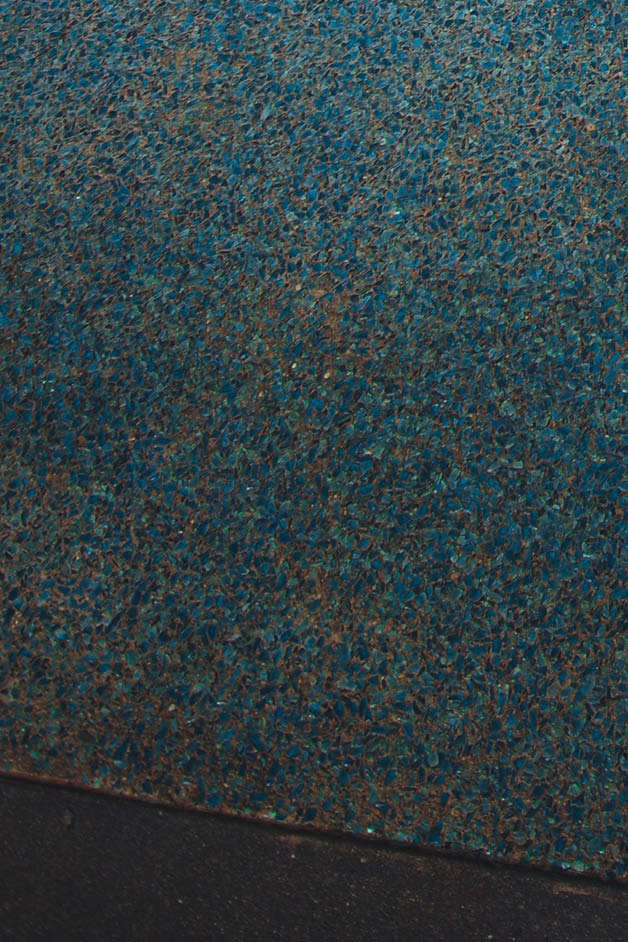 |
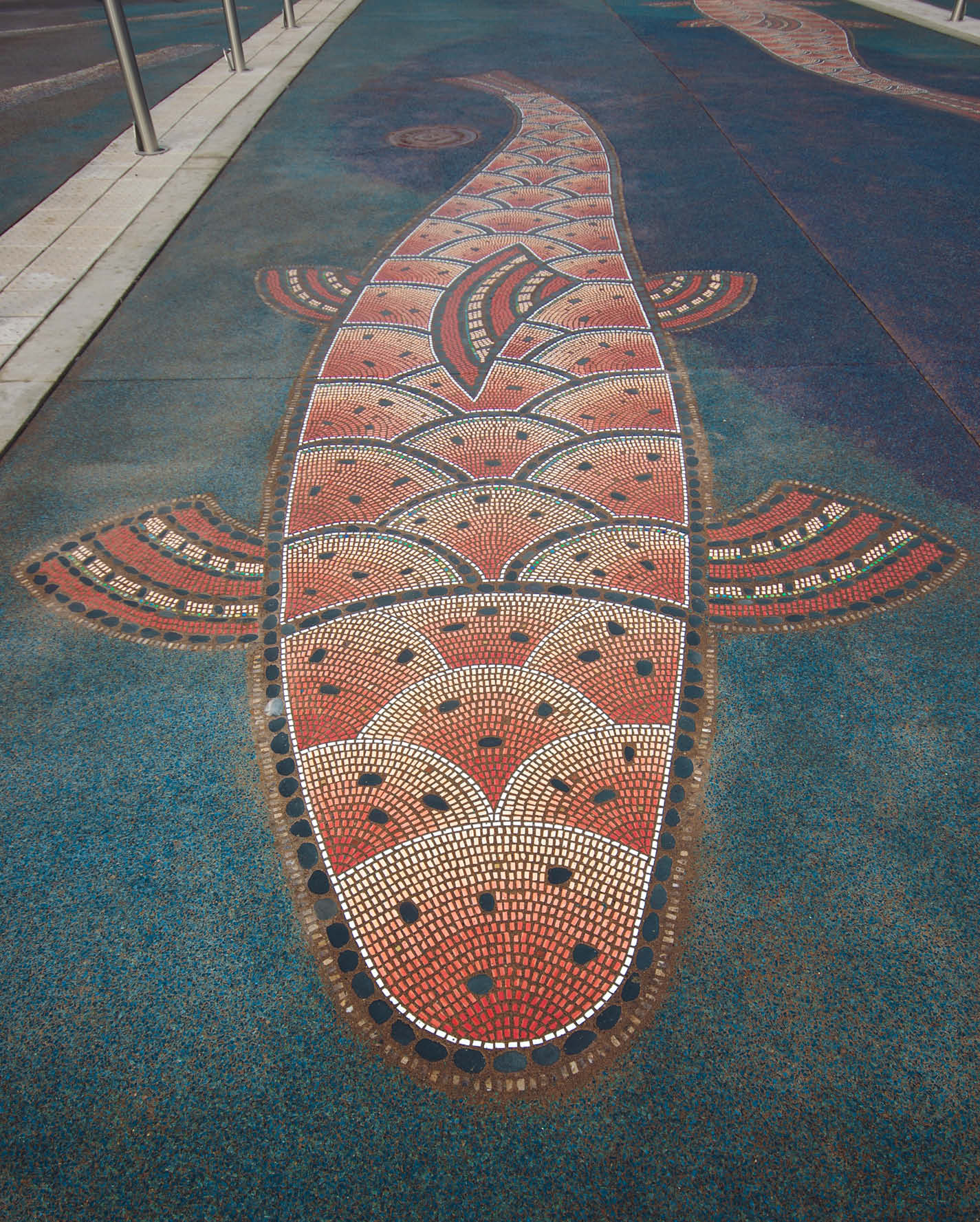 |
Salmon and logs
Coming up with a final design for the plaza was a collaborative process. Belarde says the salmon-and-logs design came from the city and ESA.
“They had landed on the idea of keeping it Northwest and the riverscape, but the size and shape of the fish and the logs went through several renditions,” he says.
“We got recommendations from Amanda on what the mosaics would look like,” says Garbely. “The one major change was that (actual) Coho salmon are more of a yellow color, but it didn’t stand out, so I switched to a bright orange. Rather than being realistic, they’re more art.”
Additionally, Belarde worked with Garbely on the water effects around the salmon, as well as the river and shore surrounding the logs, says Chris Klemaske, Belarde Co.’s decorative concrete specialist.
“Jacob did a lot of samples with the Lithocrete, finding the right recycled glass to create those effects,” Klemaske says. “He really worked hand-in-hand with Jennifer on those colors.”
A final design was agreed upon in late June 2019, and Seibel had the mosaics ready to go by September. They were shipped to Milwaukie by truck.
Prepping for the install
Garbely and Tyson delos Santos, Belarde’s project manager, both say additional prep work needs to be done at the site before the mosaics could be installed. For her part, Garbely says that includes making sure all the utilities were outside the plain concrete band that would enclose the project.
“The only thing left was a manhole I couldn’t move,” she says. “Instead we changed the design of the fish to make sure it would go around the manhole. “
Additionally, four 9-by-9-foot foundations were in place as part of the bands to allow for the future installation of large posts on which to install lights, shade structures or possibly vertical art elements in a subsequent phase to the project.
“There were also a lot of layouts to get the orientation accurate,” says delos Santos. “We had to do the broad layout and then get the transitions between the different colors of Lithocrete from one pour to the next. It looks easy when you look at the final product, but there’s a lot of planning involved.”
Some of that work had to be done between pours, delos Santos adds, and the work wasn’t done under ideal weather conditions. Consequently, the work spanned several weeks.
Installing the mosaics
When the time arrived to install the mosaics, Seibel was brought in. That was to make sure the mosaics weren’t damaged, delos Santos says, as well as to get the proper alignments for each piece.
“We did the mosaics in four pours,” he says. “Each fish was a separate pour and each section of logs was a separate pour. We tried to keep things as manageable as possible.”
The actual installation is straightforward, Belarde says.
“We placed the concrete and did our typical screeding and bull-floating,” he says. “We then placed the LithoMosaics and hand-seeded all the glass aggregate around them. Once embedded, we removed the mesh and did our typical finishing. The next day, we came back and washed off the top layer of the matrix. Exposing the glass aggregate and mosaic tiles.
“From there, we put in the relief joints and let it cure,” Belarde adds. “The week prior to the ribbon cutting (which occurred Nov. 21) we went back and applied a sealant.”
All’s well
Part of the secret to his company’s success with these special projects, Belarde says, is that while his crews have in highly decorative work experience, for special projects the company does mock-ups in-house. In this case, the crew did three mock-ups before working on the site.
Even so, delos Santos says, it took eight men to handle the installation of the salmon. That number grew to 10 for the logs.
“The logs were a little bit trickier because of the span,” he says. “Everything had to be done off platforms. Each section of the logs came in 16 individual pieces that all had to line up with each other perfectly. To make sure everything matched up exactly, we felt they had to be placed together in one single pour. Even despite the added complexity.”
The results are spectacular, Garbely says. Not only do her children enjoy “balancing” on the in-street logs, but the mosaics only need occasional power-washing to maintain.
“There was a little leap of faith,” she concludes. “The challenging part was not knowing exactly how it was going to turn out.”
